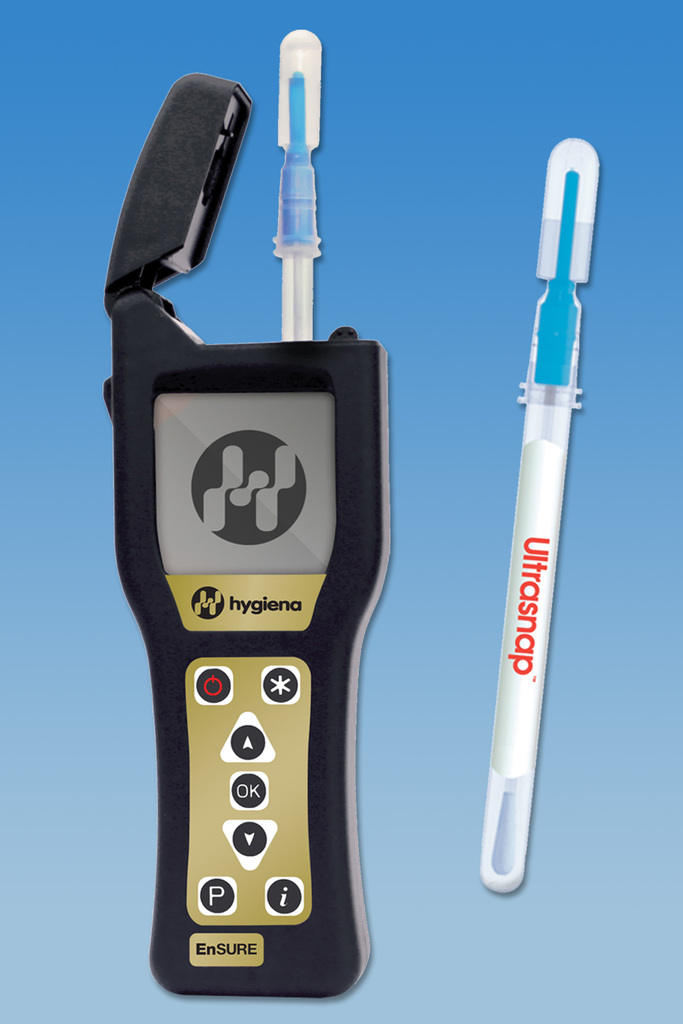

|
Chris Shaw
Editor |
| Home> | FACILITIES MANAGEMENT | >Infection Control & Prevention | >Control norovirus outbreaks |
Control norovirus outbreaks
22 July 2014
To critically review the management of norovirus outbreaks, Hygiena International ATP test systems (involving a hand-held SystemSURE luminometer and UltraSnap swabs) have been used to evaluate the effectiveness of cleaning procedures, following two norovirus outbreaks on a cruise ship.

Norovirus is the most prevalent cause of infectious gastroenteritis in the UK, and the ATP Bioluminescence technique has been used for many years to identify potential sources of contamination in the food chain, in production and preparation areas as well as many other industrial and commercial applications such as restaurants and hotels etc.
It has also been utilised more recently to monitor surface cleanliness, and used in conjunction with varying infection control measures to monitor many other areas of potential infection. These include confined environments as found in care homes and hospitals, where secondary or subsequent outbreaks often re-occur even after initial cleaning and sanitation procedures have been undertaken. Other potential areas of application include schools, or wherever food is prepared or consumed by the general public.
Any cleaning procedure is designed to remove residues of food and body fluids such that the subsequent application of disinfectants can function correctly and inactivate residual microbial contamination. Foods and body fluids contain large amounts of ATP i.e. adenosine triphosphate (the universal energy carrier) such that residues of ATP remaining on surfaces after cleaning provide a direct, objective measure of the efficacy of the cleaning process and residual contamination risk.
The Hygiena UltraSnap swabs contain a reagent known as luciferase/luciferin in the bulb of the swab. Once the swab is snapped and the bulb squeezed, an oxidation reaction takes place with any ATP present, emitting light. The light produced is directly proportional to the amount of ATP in the area tested. This is a rapid method showing a strong correlation between ATP and microbial cells, with results measured in relative light units (RLU) can be obtained within 15 seconds.
The key to preventing the spread of norovirus is thorough and effective cleaning combined with disinfection during and after an outbreak, and the effectiveness of decontamination should be evaluated by health officers. The Hygiena SystemSURE test procedure is swift, provides a PASS/CAUTION/FAIL result and can be undertaken by personnel after only minimal training.
- Rapid bacteria test
- Test for salmonella
- Detect food poisoning risk
- Quickly detects gluten in final rinse water samples
- Fast & accurate salmonella testing
- Officers call in the hit swab
- Bacteria test extended
- Hospitals benefit from ATP hygiene monitoring
- Hygiene test is recipe for success
- A detection system with rapid results
- Developed to protect the US military – now fighting UK germs
- The POD – Reduce your paper consumption by up to 20%
- Barcode traceability
- Say goodbye to germs in the workplace
- Weapon in war on superbugs
- Protects knee from infection
- Accessible & educational
- Rent disinfection unit
- Stop cross contamination
- Antimicrobial kneepads





















